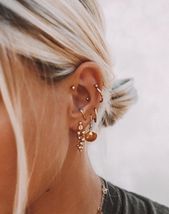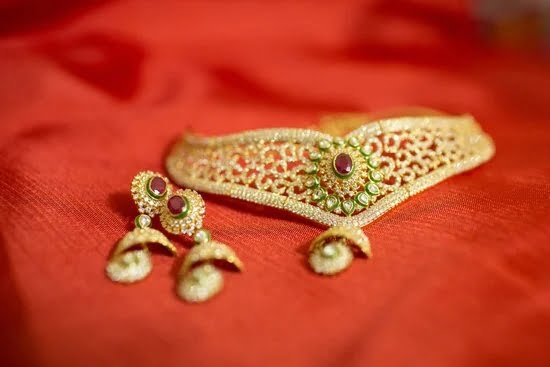Gold and diamond rings have long been admired for their timeless beauty and value. However, one aspect of these exquisite pieces that often goes unnoticed is the tiny mark etched onto the metal surface. These marks are not just random symbols or initials; they hold significant information about the jewelry’s maker. Jewelry maker’s mark identification is an essential skill for collectors, buyers, and enthusiasts as it enables them to authenticate and appreciate the craftsmanship behind these pieces.
The importance of jewelry maker’s mark identification cannot be overstated. For collectors and buyers, these marks serve as a guarantee of quality and authenticity. They provide crucial information about where and by whom the piece was made, allowing individuals to verify its provenance and historical significance. Furthermore, recognizing renowned jeweler’s marks can significantly impact a piece’s value in the market.
Understanding jewelry maker’s marks requires delving into a rich history dating back centuries. From ancient civilizations to modern times, craftsmen have proudly left their mark on their creations. The development of artisan guilds during the Middle Ages sought to regulate quality standards through these marks, ensuring that customers could trust the craftsmanship behind each piece. Today, jewelry makers continue this tradition by stamping their unique mark onto gold and diamond rings.
In this article, we will explore the fascinating world of jewelry maker’s marks on gold and diamond rings. We will delve into their history, decoding common symbols and initials used in these marks.
Furthermore, we will discuss techniques for identifying maker’s marks on different styles of gold and diamond rings. By understanding these key elements, readers will gain valuable knowledge that will aid them in authenticating the jewelry they encounter or desire to add to their collection or wardrobe.
Understanding Jewelry Maker’s Marks
The practice of marking jewelry with a maker’s mark has a long and rich history that dates back centuries. Understanding the origins and evolution of jewelry maker’s marks is essential for anyone interested in identifying and authenticating gold and diamond rings. This section will provide a brief history of jewelry maker’s marks, exploring their significance and development over time.
Origins of Jewelry Maker’s Marks
Jewelry maker’s marks have been used throughout history as a way to identify the artist or workshop responsible for creating a piece of jewelry. The practice can be traced back to ancient civilizations such as Egypt and Mesopotamia, where craftsmen would inscribe their initials or symbols onto their creations. These marks were not only used for identification but also served as a form of branding, allowing artisans to showcase their skills and reputation.
As trade routes expanded during the Middle Ages, the use of maker’s marks became even more important. In Europe, guilds were established to regulate various industries, including jewelry making. Guild members were required to have unique maker’s marks registered with the guild, ensuring that their work could be easily identified and regulated. These early maker’s marks often consisted of initials or simple symbols that represented the individual or workshop.
The Evolution of Jewelry Maker’s Marks
Over time, jewelry maker’s marks evolved from simple initials or symbols into more complex designs. As the Renaissance period ushered in a newfound appreciation for artistic expression, jewelers began incorporating elaborate motifs into their maker’s marks. These designs often featured intricate engravings or tiny works of art that reflected the jeweler’s style and creativity.
During the 19th century, advancements in industrialization led to mass production techniques for jewelry making. However, even during this period, many master jewelers continued to use personalized maker’s marks as a testament to their craftsmanship and individuality.
In recent years, technology has revolutionized the way jewelry maker’s marks are created and applied. Laser engraving and computer-aided design (CAD) now allow for intricate and precise markings that were once unimaginable. Despite these advancements, many contemporary jewelers still choose to incorporate traditional elements into their maker’s marks, paying homage to the rich history of this practice.
Understanding the history of jewelry maker’s marks provides valuable context when it comes to identifying and authenticating gold and diamond rings. It allows collectors, dealers, and enthusiasts to appreciate the skill and artistry behind each piece of jewelry while also recognizing the individual or workshop responsible for its creation.
Decoding the Language of Maker’s Marks
When it comes to identifying and authenticating gold and diamond rings, understanding the language of maker’s marks is essential. Maker’s marks are specific symbols, initials, or other unique identifiers that makers use to distinguish their work. These marks often reveal information about the origin, date, and craftsmanship of a piece of jewelry.
To decode the language of maker’s marks, it is important to familiarize yourself with some common symbols and initials used in jewelry-making. Here are a few examples:
- Crown: The crown symbol often signifies that the piece was made in the United Kingdom.
- Anchor: An anchor symbol typically indicates that the jewelry was crafted in Birmingham, England.
- Lion Passant: This symbol features a lion walking towards the left and is associated with British sterling silver.
- Letters or Initials: Many makers use their initials or logo as their unique mark. For example, “T&Co” represents Tiffany & Co., while “CH” stands for Cartier.
It is important to note that maker’s marks can vary depending on the time period and region. Therefore, research plays a crucial role in understanding these symbols.
If you come across an unfamiliar marking on a gold or diamond ring, there are several resources available to help you decipher its meaning. Online databases such as antique jewelry websites and forums dedicated to jewelry identification often provide comprehensive information on different maker’s marks. Additionally, books and publications specializing in vintage or antique jewelry can be valuable references.
By understanding common symbols and initials used in maker’s marks, you can begin to unravel the history and authenticity of gold and diamond rings. Taking the time to research these identification markers not only adds value to your own jewelry collection but also ensures that you are making informed decisions when buying or selling these precious pieces.
Examining the Different Styles of Gold and Diamond Rings
Gold and diamond rings come in a wide range of styles, each with its own unique characteristics. By examining the different styles of these rings, we can gain valuable insights into the history, craftsmanship, and even potential value of a piece. In this section, we will explore some of the most popular styles of gold and diamond rings.
One common style is the solitaire ring, which features a single diamond as the centerpiece. This classic design showcases the beauty and brilliance of the diamond, with minimal distractions from other elements. Solitaire rings are timeless and often seen as symbols of enduring love and commitment.
Another popular style is the halo ring, where smaller diamonds surround a center stone, creating a “halo” effect. This gives an illusion of a larger central diamond and adds sparkle and glamour to the overall design. The halo style has gained popularity in recent years for its ability to make a statement with its striking appearance.
For those who prefer a vintage or antique look, there are art deco and Victorian-style rings. Art deco rings were prominent during the 1920s and 1930s and are characterized by bold geometric patterns and colorful gemstones. Victorian-style rings reflect designs from the Victorian era (1837-1901) and often feature intricate details such as filigree work or elaborate engraving.
In addition to these styles, there are also eternity bands, three-stone rings symbolizing past, present, and future; cluster rings with multiple diamonds or gemstones grouped together; and many more. Each style offers its own charm and allure.
By familiarizing yourself with these different styles of gold and diamond rings, you’ll have a better understanding of the various options available in the market. Whether you’re looking to purchase an engagement ring or simply appreciate jewelry as an art form, recognizing these different styles can help you make informed decisions regarding your own personal taste and preferences.
- Solitaire ring
- Halo ring
- Art deco ring
- Victorian-style ring
- Eternity band
- Three-stone ring
- Cluster ring
Techniques for Identifying Maker’s Marks on Gold and Diamond Rings
Identifying maker’s marks on gold and diamond rings can be a challenging but rewarding process. These marks provide valuable information about the piece of jewelry, such as its authenticity, origin, and even potential value. Understanding the techniques used to identify these marks is essential for collectors, buyers, and enthusiasts in the world of jewelry. Here are some effective techniques to help you identify maker’s marks on gold and diamond rings.
One of the simplest ways to identify maker’s marks is by using a magnifying glass or jeweler’s loupe. These tools allow you to examine the intricate details of the mark closely. Look for any initials, symbols, or names etched onto the jewelry. Take note of any unique designs or patterns that may serve as identifying characteristics for specific makers.
Another technique is conducting research online or consulting reference books that catalog jewelry maker’s marks. Many websites and databases are dedicated to this topic, making it easier than ever to search for information about certain hallmark styles or specific makers. When researching online, be sure to cross-reference multiple sources to ensure accuracy.
If you are unable to find the maker’s mark through traditional methods, consider seeking professional assistance from a jeweler, appraiser, or historian specializing in jewelry identification. These experts have extensive knowledge in deciphering and identifying various maker’s marks. Their expertise can greatly aid in providing accurate information about your gold and diamond ring.
| Technique | Description |
|---|---|
| Magnifying Glass or Jeweler’s Loupe | Use a magnifying glass or jeweler’s loupe to closely examine the mark for initials, symbols, names, unique designs |
| Online Research and Reference Books | Utilize online databases and reference books to search for information about hallmark styles, specific makers |
| Professional Assistance | Consult with a jeweler, appraiser, or historian specializing in jewelry identification for expert guidance and accurate information. |
By employing these techniques, you can successfully identify maker’s marks on your gold and diamond rings. Remember that the process may require patience and persistence. However, the knowledge gained from identifying these marks can significantly enhance your understanding of the piece’s history and value.
Resources for Researching Jewelry Maker’s Marks
Researching jewelry maker’s marks can be a fascinating and rewarding process. It not only helps in determining the authenticity and value of gold and diamond rings, but also provides valuable insights into the history and craftsmanship of these pieces. In this section, we will explore some resources that can assist you in identifying jewelry maker’s marks.
1. Online Databases:
One of the most convenient ways to research jewelry maker’s marks is by utilizing online databases dedicated to this purpose. These databases contain vast collections of images and information on various maker’s marks from different time periods and regions. Some popular online resources include The Online Encyclopedia of Silver Marks, Hallmarks, & Makers’ Marks, Antique Jewelry University, and The Touchmark Book.
2. Books:
Books on jewelry history and identification often include sections or chapters dedicated to the topic of maker’s marks. These books provide detailed information on specific jewelers, their trademarks, and craftsmanship styles. By referring to reliable reference books like “Miller’s Costume Jewelry” by Judith Miller or “American Jewelry Manufacturers” by Dorothy Rainwater, you can gain a deeper understanding of the mark identification process.
3. Local Libraries and Archives:
Local libraries and archives can be excellent sources for researching maker’s marks in gold and diamond rings from specific regions or time periods. Their collections may include books, catalogs, trade journals, or even historical documents related to jewelry making. Librarians or archivists at these institutions can guide you in accessing relevant materials for your research.
| Resource | Description |
|---|---|
| Online Databases | Collections of images and information on various maker’s marks |
| Books | Reference books on jewelry history and identification |
| Local Libraries and Archives | Collections of books, catalogs, trade journals, and historical documents |
By utilizing these resources, you can enhance your knowledge about maker’s marks and make informed decisions when buying or selling gold and diamond rings. Remember, identifying maker’s marks is an important aspect of understanding the value and authenticity of jewelry pieces.
Case Studies
Throughout history, there have been numerous renowned jewelry makers who have left their mark on the industry. These artisans have created exquisite pieces that are treasured by collectors and enthusiasts alike. In this section, we will explore some of the most famous jewelry maker’s marks found in gold and diamond rings, delving into the stories behind these marks and their significance.
Cartier
The name Cartier is synonymous with luxury and elegance. Established in 1847 by Louis-François Cartier, this French jeweler quickly gained recognition for its innovative designs and use of high-quality materials. When it comes to identifying a Cartier gold or diamond ring, look for their signature mark: a double ‘C’ enclosed in an oval frame. This iconic symbol has become an emblem of prestige and sophistication.
Tiffany & Co.
Tiffany & Co., founded by Charles Lewis Tiffany in 1837, is another prominent jewelry house known for its exceptional craftsmanship. One of the most recognizable maker’s marks from Tiffany & Co. is the company’s name itself, usually seen engraved inside the band or on a hidden part of the ring. Additionally, you may find other markings such as “T&Co.” or “PT950” indicating platinum content.
Harry Winston
Harry Winston is renowned for creating some of the world’s most exquisite diamond jewelry pieces. Identify a Harry Winston gold or diamond ring by looking for their distinctive mark: “HW” followed by a small crown symbol on both sides of the initials. This mark represents the brand’s commitment to unparalleled quality and extraordinary design.
These case studies demonstrate how important jewelry maker’s marks are in identifying and authenticating gold and diamond rings. Not only do these marks provide insight into the craftsmanship behind each piece, but they also serve as a testament to the legacy and reputation of the jewelry maker. By familiarizing yourself with these famous marks, you can develop a discerning eye for fine jewelry and appreciate the artistry that goes into creating each unique piece.
Tips for Authenticating Gold and Diamond Rings Through Maker’s Marks
Authenticating gold and diamond rings through maker’s marks can be a valuable skill for jewelry enthusiasts and collectors. Maker’s marks are unique symbols or initials that jewelry makers use to identify their work, much like an artist signing their painting. By understanding and deciphering these marks, it is possible to gain insights into the authenticity, quality, and value of gold and diamond rings.
One important tip for authenticating gold and diamond rings through maker’s marks is to research and consult reputable resources. There are various books, online databases, and websites dedicated to cataloging maker’s marks from different time periods and regions.
These resources provide information on specific makers, their styles, trademarks, and timelines. By cross-referencing the mark on a gold or diamond ring with these sources, one can determine if it matches known makers or if it has been used by other reputable jewelers in the past.
Another useful tip is to study the design elements of the ring in relation to the maker’s mark. Authentic gold and diamond rings usually have a consistent style that aligns with the era in which they were created. Pay attention to details such as gemstone settings, metalwork patterns, engravings, and overall craftsmanship.
Compare these features with examples of known works by specific jewelers or those from a particular period. If there are discrepancies in style or quality between the ring and the supposed maker’s mark, further investigation may be necessary.
Additionally, seeking professional expertise can greatly assist in authenticating gold and diamond rings through maker’s marks. Gemologists or jewelry appraisers who specialize in vintage or antique pieces are knowledgeable about different makers’ styles and techniques. They have access to extensive databases, historical records, and years of experience examining jewelry. Consulting with an expert can provide valuable insights into not only the authenticity but also other factors such as market value or rarity associated with a specific maker’s mark.
Conclusion
In conclusion, the identification of jewelry maker’s marks in gold and diamond rings holds significant value for both collectors and enthusiasts alike. By understanding the history and language behind these marks, individuals can gain insights into the origins and authenticity of their jewelry pieces.
The process of decoding maker’s marks involves recognizing common symbols and initials that are often associated with specific jewelers or manufacturers. This knowledge allows individuals to establish a connection between their jewelry pieces and the renowned craftsmen who created them.
Moreover, identifying maker’s marks on gold and diamond rings can be a valuable tool for authentication purposes. By examining the different styles of these rings, individuals can compare them against known maker’s marks to verify the authenticity of their jewelry.
Fortunately, there are numerous resources available for researching jewelry maker’s marks. Online databases, books, and expert advice can all contribute to a successful identification process.
Through case studies of famous jewelry maker’s marks in gold and diamond rings, individuals can learn from past examples and further enhance their understanding of this specialized field.
In conclusion, the value of identifying jewelry maker’s marks in gold and diamond rings extends far beyond aesthetic appreciation. It offers insight into craftsmanship, authenticity verification, historical context, and personal connection to renowned artisans. Therefore, anyone seeking to delve deeper into the world of fine jewelry should never overlook the significance of these enigmatic symbols.

Welcome to my jewelry blog! My name is Sarah and I am the owner of this blog.
I love making jewelry and sharing my creations with others.
So whether you’re someone who loves wearing jewelry yourself or simply enjoys learning about it, be sure to check out my blog for insightful posts on everything related to this exciting topic!





